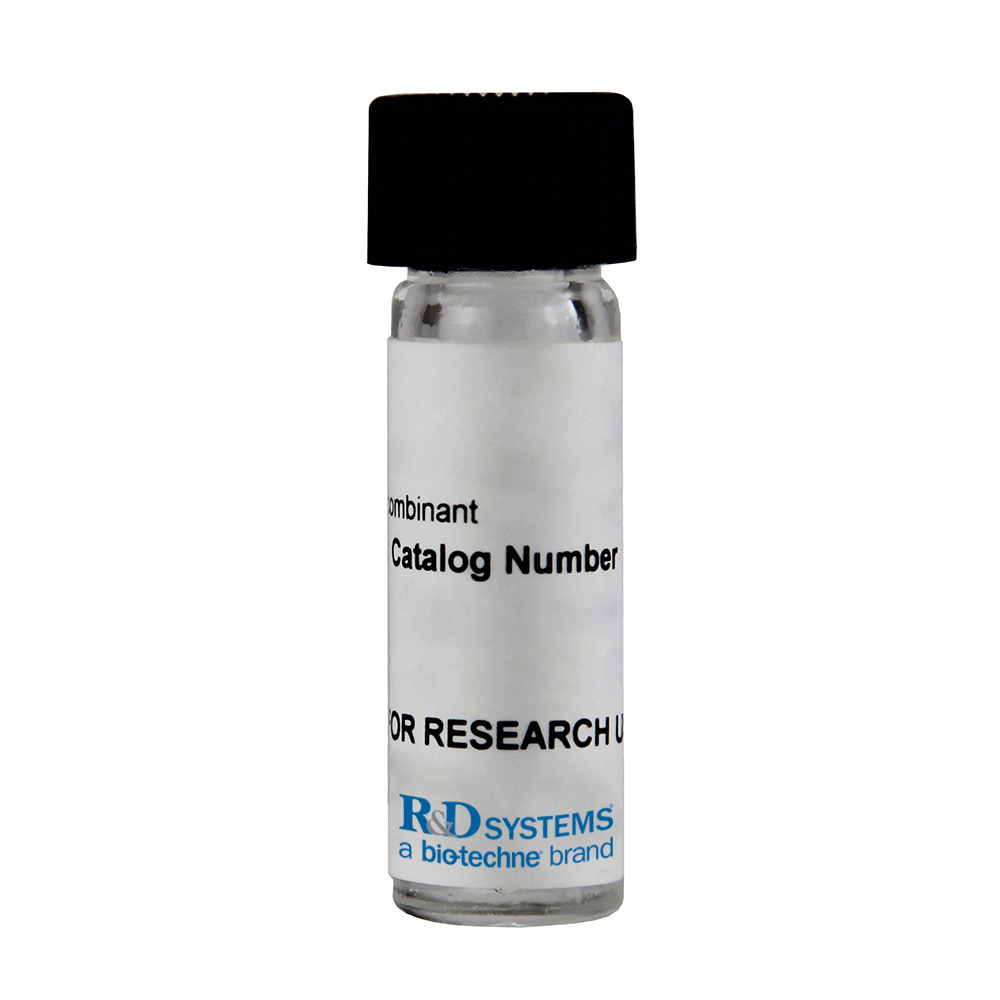 全部商品分类
全部商品分类

 下载产品说明书
下载产品说明书 下载SDS
下载SDS 用小程序,查商品更便捷
用小程序,查商品更便捷


 收藏
收藏
 对比
对比 咨询
咨询Carrier Free
CF stands for Carrier Free (CF). We typically add Bovine Serum Albumin (BSA) as a carrier protein to our recombinant proteins. Adding a carrier protein enhances protein stability, increases shelf-life, and allows the recombinant protein to be stored at a more dilute concentration. The carrier free version does not contain BSA.
In general, we advise purchasing the recombinant protein with BSA for use in cell or tissue culture, or as an ELISA standard. In contrast, the carrier free protein is recommended for applications, in which the presence of BSA could interfere.
480-RM
| Formulation | Lyophilized from a 0.2 μm filtered solution in Citric Acid, NaCl and EDTA with BSA as a carrier protein. |
| Reconstitution | Reconstitute at 100 μg/mL in sterile PBS containing at least 0.1% human or bovine serum albumin. |
| Shipping | The product is shipped at ambient temperature. Upon receipt, store it immediately at the temperature recommended below. |
| Stability & Storage: |
|
480-RM/CF
| Formulation | Lyophilized from a 0.2 μm filtered solution in Citric Acid, NaCl and EDTA. |
| Reconstitution | Reconstitute at 100 μg/mL in sterile PBS. |
| Shipping | The product is shipped at ambient temperature. Upon receipt, store it immediately at the temperature recommended below. |
| Stability & Storage: |
|
Recombinant Mouse IL-1ra/IL-1F3 Protein Summary
Product Specifications
Arg8-Gln159, with an N-terminal Met
Analysis

Background: IL-1ra/IL-1F3
IL-1ra was originally isolated from the urine of patients with monocytic leukemia and has also been purified from adherent monocytes. The naturally-occurring, fully glycosylated form has an apparent molecular weight of about 25,000 Daltons. The protein shows 26% amino acid homology to IL-1 beta and 19% homology to IL-1 alpha. It will compete with either factor for receptor binding, but does not interact with either one. Human IL-1ra will bind to both types of IL-1 receptor (I and II) on human cells. In mouse, IL-1 RII does not bind IL-1ra. The recombinant, non-glycosylated form of IL-1ra blocks binding of IL-1 to its receptor equally as well as the naturally-occurring, glycosylated form. The IL-1ra has been shown to block the inflammatory responses induced by IL-1 both in vitro and in vivo. Pre-clinical and clinical studies were done to test possible therapeutic applications for IL-1ra in the treatment of sepsis, rheumatoid arthritis and chronic myelogenous leukemia.







